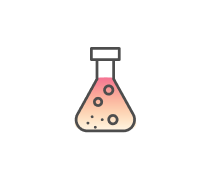Which form of cholesterol transport is most closely associated with a...
The sum total of all the chemical reactions necessary to maintain life...
Which organ is important to carbohydrate and lipid metabolism because...
Which class of enzymes produces glucose from complex carbohydrates?
Which organ actually produces most of the enzymes required for...
In the post absorptive state, glycogen is hydrolyzed to liberate...
Which nutrient is classified as a micronutrient (only small quantities...
After a sperm cell combines with an oocyte, what happens next?
What would be the overall effect on the liver of a decrease in plasma...
An ovarial follicle with a primary oocyte surrounded by a single layer...
The maximum number of oocytes in an ovary will occur at what stage of...
Gluconeogenesis is an anabolic process in which:
Which stomach hormone acts on the hypothalamus to promote the...
In a 20-year old female the reproductive tract "transition...
Which area if the gastrointestinal tract is the primary site of fluid...
Nutrients from the small intestine are transported to the liver via...
The function of the colon is to absorb:
Which combination would best describe a mature (Graafian) follicle...
The implanting blastocyst "rescues" the corpus luteum by?
Implantation specifically describes:
The ruptured follicle that secretes progesterone during the secretory...
The most important hormone in long-term regulation of BMR is?
An obstruction of the common bile duct would have which effect?
Erectile tissue analogous to the male corpora cavernosa is found in...
The site of spermatozoa functional maturation and storage is the?
Fertilization usually occurs in which location?
The lipoproteins that are transported away from the small intestine...
Where doe glycolysis take place?
The lipoproteins that remove cholesterol from the tissues are?
Which mechanism represents our body's response(s) to a decrease in...
In the process of ovulation what is actually ejected from the ovary?
Based on the greatest amount of energy (ATP) produced per mole of...
The testicular cells that produce testosterone are the:
Sertoli cells of the testis are principally regulated by which...
Beginning on the first day of the menstrual cycle, the order of the...
All of the following are normal functions of hepatocytes EXCEPT?
A person exhibiting an elevated body temperature, excess sweating,...
The primary site of spermatogenesis is the:
Which hormone is the principal regulator of Leydig cell testosterone...
Which cells secrete Mullerian inhibiting substance (MIS)?
What is the function of Mullerian inhibiting substance (MIS)?
Which event in the male sex response is directly regulated by the...
The protein that clots and causes the stickiness of semen is?
The oviducts, uterus, and upper vagina develop from which embryonic...
Before secreting milk, the mammary glands secrete?
The correct sequence of pre-embryonic structures is:
Where does the amniotic cavity derive from?
Which response would reflect an increase in plasma insulin levels?
A severe insulin deficiency would be characterized by all of the...
Which cells divide by meiosis?
Which neurotransmitter accounts for penile erection by inducing...
During aerobic respiration, the transfer of electrons down the...
The secretory phase is characterized by?
The thick smooth muscle layer of the uterus is termed the?
What is the function of oocyte cortical granule release?
Shivering thermogenesis principally involves?
According to the two-cell mechanism of follicular estrogen synthesis,
Which structure is most comparable to the male scrotum based on...
















